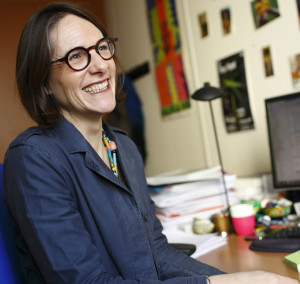Ariane Pailhé
unveils some of the features of INED’s new website

Ariane Pailhé is an INED researcher and editor-in-chief since 2011 of the Institute’s website. She has directed and supervised the entire process of rethinking and redesigning the site.
(Interview conducted in september 2014)
What prompted the decision to renovate the INED website?
The previous version dates from 2006, and internet-user practices have changed a great deal since then, notably with the arrival of smartphones and tablets. We needed to adapt the site to those new tools. The INED website offers a considerable volume of resources in both French and English, including videos, animated maps, key figures for the general public, teachers, students and journalists and more specialized material for researchers. But this wealth of content wasn’t always easily accessible. We’ve worked to make the site operate more smoothly.
What are the main new features?
The first major change is direct entry to information on “Major topics” from the homepage and indeed every webpage. For example, if you’re looking for information on world migrations, a single portal page presents all the different types of content on that topic: numerical data, videos, maps, demographic fact sheets, articles and other readings, etc.
The second significant difference is that we have designed distinct home pages for research professionals and the general public. This gives each user access to the kind of information he or she is most directly interested in. On their homepage, researchers and academics can directly access such tools as the survey catalogue and databases, while the general public will find key figures, the latest news and multimedia materials. The third major change: we’ve created versions for tablets and smartphones. Most of our interactive animated material has also been redone to make it available on those formats. Those files can now be downloaded, meaning that teachers can use them in class without being connected, for example.
Lastly, we redesigned the graphics. They’re more current, with lots of images and illustrations. We’ve been particularly attentive to the quality of the photos. We’ve even contacted street artists to be sure we can reproduce their works. The online store has also been modernized. And there are many other new features, like special sections on INED surveys and methodology. I’ll leave you to discover them!
Can you tell us about some of the new content offered on the site?
Our site was updated daily in both French and English. Thanks to the “latest news” section, users can now directly access all new information. The site has new videos and new teaching kits for students, as well as demographic fact sheets presenting the main demographic notions and the topics and issues handled in population studies. Our objective is to offer more videos, mini-lectures by researchers and animated material. We will also be providing syntheses of scientific articles, so that research results will be accessible to as many people as possible.
